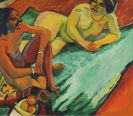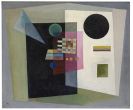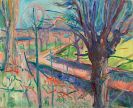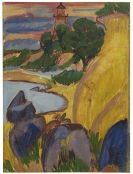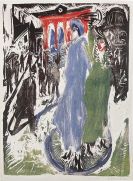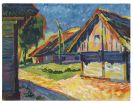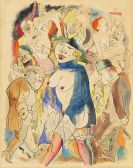
Charles R. Ashbee
London
1863 -
Godden Green
1942
Charles Robert Ashbee studyied history in Cambridge before he turned to architecture. He was taught by the architect G.F. Bodley in Whitechapel, London. Inspired by John Ruskin's writings and enthusiastic about Williams Morris' work and the fledgling Arts and Crafts movement, Charles R. Ashbee established courses in Whitechapel to revive crafts techniques and skills.
In 1887 this became the School of Handicraft and in 1888 Charles R. Ashbee founded the Guild of Handicraft. In 1890 the institution moved into Essex House in London. However, in order to stick to the Arts and Crafts movement's ideal of the workshop as a rural community, in 1902, Charles R. Ashbee moved the Guild from the East End of London to Chipping Campden in the countryside.
By 1898 Charles R. Ashbee had founded the Essex House Press, which specialised on hand-printed books. In 1906 Charles R. Ashbee published "A Book of Cottages and Little Houses" and, in 1909, "Modern English Silverwork".
Ashbee's designs for silver and metal objects, his exquisite belt buckles, jewellery, cutlery and tableware also contributed to his renown and aroused the interest of German and Austrian Jugendstil artists. Inspired by William Morris, Charles R. Ashbee was a pivotal figure in the Arts and Crafts movement. For a while, the Guild of Handicraft was successful but as the art objects it produced were very expensive, commissions declined and the Guild had to be disbanded in 1907.
As an architect, Charles R. Ashbee designed a number of buildings in Budapest, London and Sicily.
Would you like to sell a work by Charles R. Ashbee?
Infos for seller
